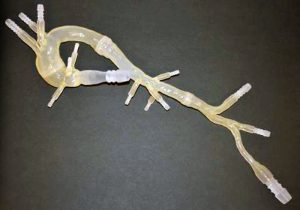According to the Center for Disease Control, more than half a million people die from heart disease in the United States every year. To diagnose these cardiac conditions and treat them before the worst occurs, doctors are increasingly relying on a process known as cardiac catheterization. In 2013 alone, over 2.7 million cardiac catheterizations were performed in the United States. By inserting a tube, usually via the groin, up into the heart and injecting a dye visible by X-ray, doctors can determine how the heart is performing, the size of its chambers, and if there are any blockages or abnormalities, among other things. Though the process is not a very invasive one, complications can still arise.

Materialise already has a division dedicated to the production of models for cardiac health, aptly called HeartPrint. With materials that simulate heart tissue and a software suite capable of converting CT images into CAD files for 3D printing, the company was well suited to the task. Using its Mimic Innovation Suite of software, the Materialise team created a patient-specific model of the entire route from the groin, through the aorta, and into the aortic valve. The team converted a CT scan into a digital model and sliced it into four modular, interlocking pieces with their 3-matic digital CAD program.

The CASCADE Project team has already begun working with the 3D printed model and underwent a review from international scientists and a representative from the European Union. After careful consideration and much positive feedback, the project was given the go-ahead to continue their work. CASCADE is still several years away from completion, but Materialise’s vascular model has done a great deal to push it forward. While it may have been possible to create a model of the path from the groin to the heart, there was no way to do so as accurately and realistically without 3D printing technology.


